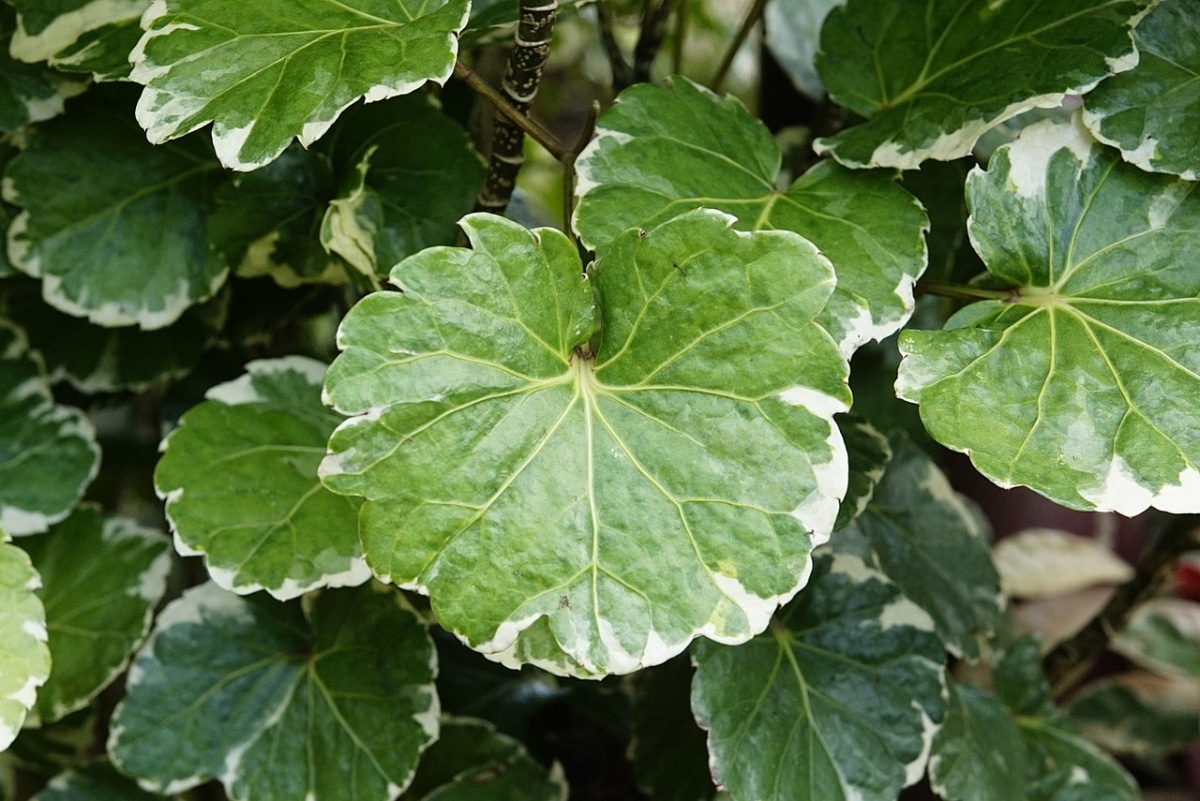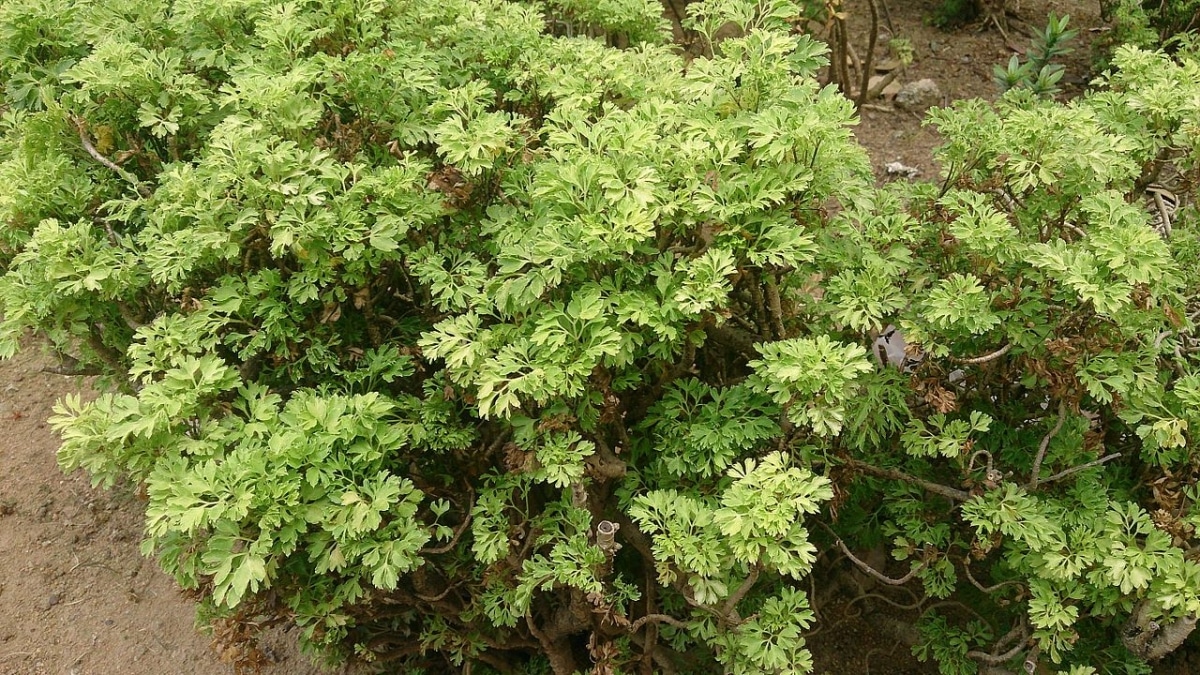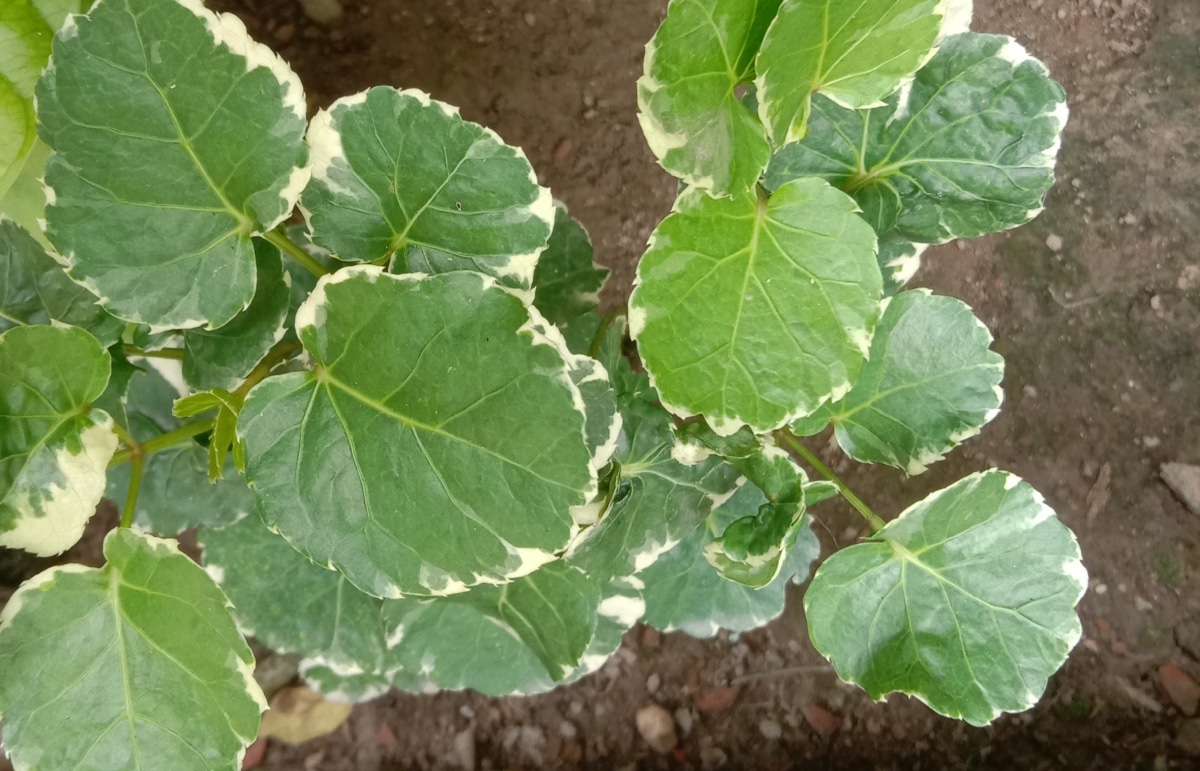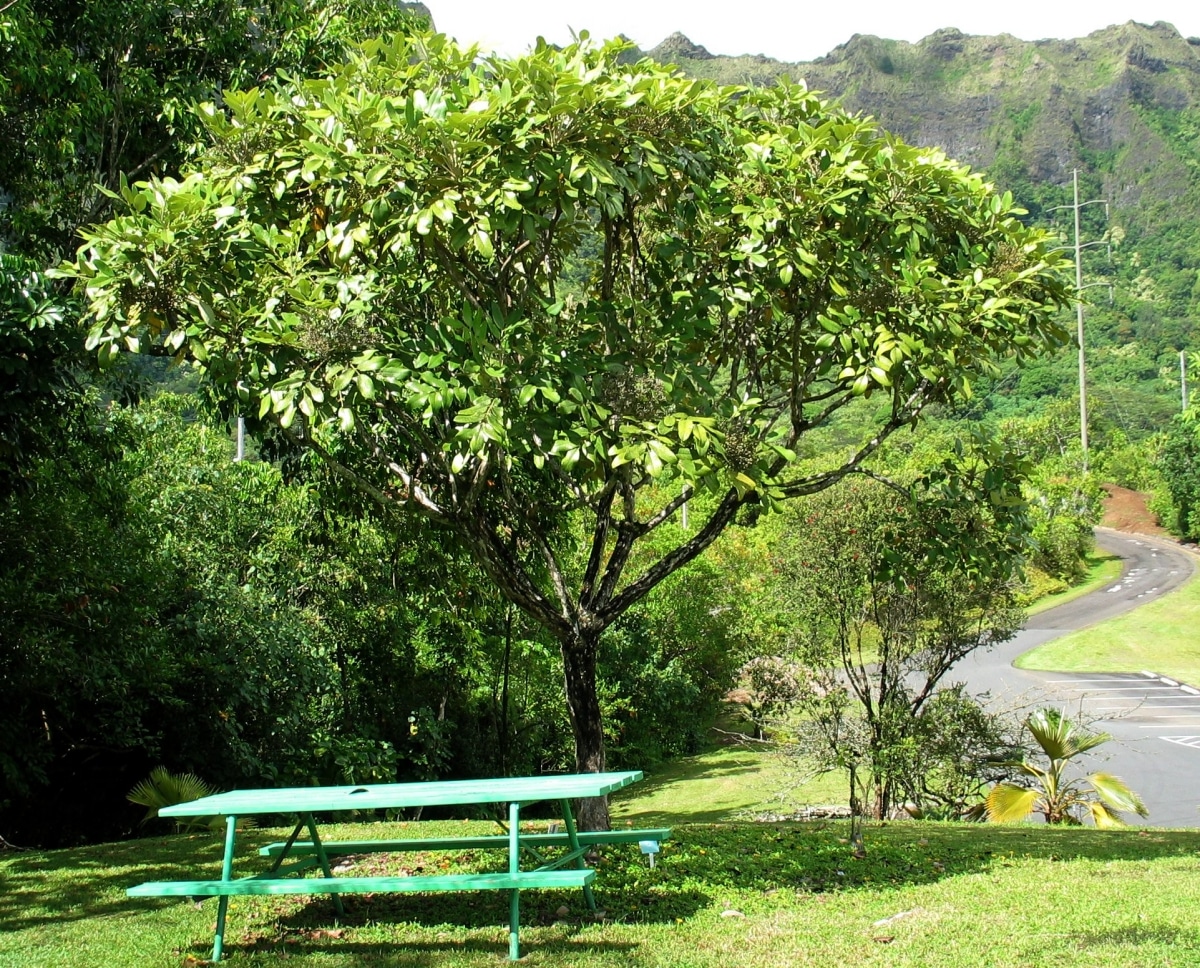
Image - Wikimedia / Vengolis
Polyscias are shrubs and trees that have bright green leaves.. They live in the tropics, so in a region where the climate is temperate they are kept indoors, at least during the winter so they don't spoil or die.
But they are not always easy to care for. What's more, I would tell you that they are quite demanding, since in addition to not tolerating the cold at all, they have a hard time in very dry environments, with low relative humidity.
Origin and characteristics of the Polyscias
It is a genus made up of a hundred species which grow on the Pacific islands as well as in Australia. These They are perennial plants, which have leaves that are generally rounded and/or composed of several leaflets or pinnae.. In addition, they have a very long petiole, that is, the stem that joins the leaf to the branch is long. The flowers can be uni or bisexual, and are gathered to form inflorescences in the form of panicles or umbels.
In popular language it is known by the name of aralia, or aralia plum, but we must be careful with this because, although they are related to the plants of the Aralia genus, they are not aralias.
What are the best known species?
Although there are about a hundred species described, unfortunately only two different ones are cultivated, which are the following:
Polyscia fruticosa

Image - Wikimedia / Mokkie
La Polyscia fruticosa it is a bush that reaches a height of about 2 meters. Its leaves are light green and lobed in shape. The flowers are white, and although they have no ornamental value, it is interesting to say that they bloom in summer.
Polyscias skullcap

Image – Wikimedia/Billjones94
La Polyscias skullcap it is a bush that reaches a height of 2 to 6 meters. The leaves are rounded, green. In regions where the climate is tropical, it is kept outdoors throughout the year, either in pots or in the gardens; on the other hand, when it is temperate, it is kept as an indoor plant.
How are Polyscias cared for?
Our protagonists are plants that, as we said, can be very demanding and difficult to care for. However, it is also true that if you keep a few things in mind, it will not be that complicated. In any case, below I will tell you everything you need to know about them and thus make them grow well:
Inside or outside?
Polyscias are very, very sensitive to cold, so much so that if the temperature drops below 13ºC it is best to keep them at home. An alternative can be to have them outside in spring and summer, and bring them inside when it cools down, but hey, they can also be kept inside throughout the year.
Now, it is important that they are placed in areas where there is a lot of light, but not direct light since they do not tolerate it. Also, if they are going to be in the house, they have to be put in a room where there are no fans or air conditioning, since air currents harm them.
Potted or planted in the garden?
This will depend, above all, on the climate in the area. As we said, as they do not tolerate cold, if it does in the place where we live, then it is best to have them in a pot.
But if, on the contrary, the climate is warm throughout the year, with a minimum temperature equal to or greater than 13ºC, we can choose to plant them in the garden, or keep them in pots that we will place, for example, in the patio or on the terrace.
What kind of land do they need?

Image - Flickr / David Eickhoff
The Polyscias grow in fertile, well-drained soils. For this reason, if they are kept in pots, it is important that they are filled with a universal substrate that contains perlite. For example, the following brands are highly recommended: fertiberia, Westland, Flower.
If you want to have them in the garden, they will be planted in soils rich in organic matter, and that do not easily flood. Likewise, it is important that the pH is neutral or slightly acidic.
How often do you have to water the Polyscias?
Watering has to be more frequent the hotter it is and the less it rains. A) Yes, in summer it will be necessary to water more often than in winter for instance. Now, it must also be taken into account that we will not water a plant that is inside the house the same times as another that is outside, because inside the house the earth will always remain moist longer than the one that is out in the open
For this reason, and so that problems do not arise, we recommend checking the humidity with a small and thin wooden stick.
Do you have to spray its leaves with water?
Only if the relative humidity is less than 50% will we have to spray them. In the event that it is equal to or greater than, no. To know what humidity there is in a certain area, we recommend buying a weather station for domestic use, since for little money it is possible to get a fairly decent one, like this one:
Do they have to be paid?
Yes, if we want them to be really beautiful, we will have to pay them from spring until the end of summer. To do this, you have to use fast-acting fertilizers or fertilizers so that you can make the most of those weeks when the weather is favorable. For this reason, we will use liquid products, such as universal fertilizer or guano.
As you can see, the Polyscias are very beautiful plants that, with minimal care, are sure to make them look good.
